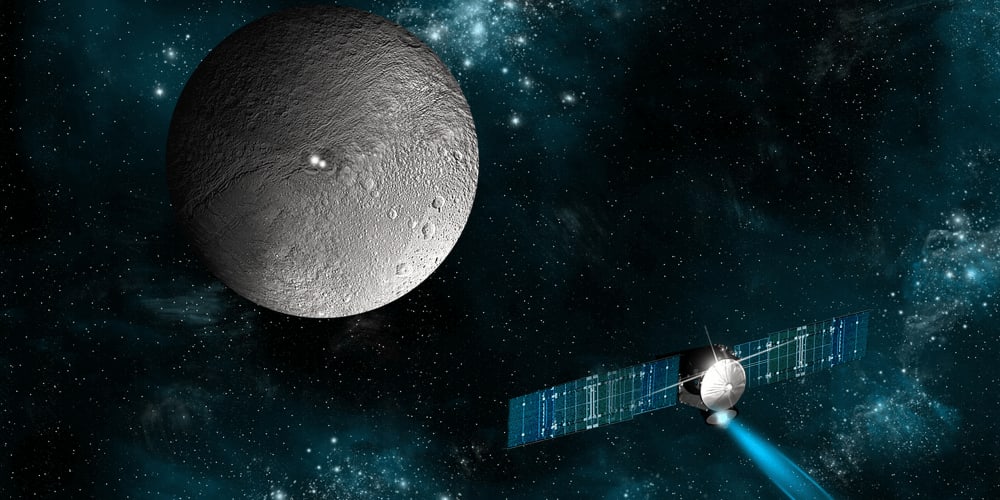Ceres, the dwarf planet in the asteroid belt between the orbits of Mars and Jupiter, has recently provoked considerable scientific interest – NASA’s Dawn spacecraft has found organic molecules there! Although Ceres is considered to have unfavorable environmental conditions – the average temperature stays around minus 175 degrees Fahrenheit – scientists allege that Ceres is likely to have had a hospitable environment.
What did scientists find?
The organic material detected near the Ernutet crater located in the northern hemisphere of Ceres was discovered with the help of a visible and infrared light spectrometer installed on Dawn. After scientists measured the light frequencies absorbed by the molecules on Ceres, they arrived at the conclusion that the organic matter has methyl or methylene groups:
- CH2
- CH3

However, it’s important to mention that the word “organic” doesn’t mean an alien civilization – what was detected by the Dawn space probe is organic compounds that are regarded to be the building blocks of life as they contain carbon atoms.
Where did the organic material come from?
Scientists believe that Ceres’ organic life wasn’t started by an asteroid or a meteorite. The concentration of the organic molecules serves as proof that they naturally formed on the dwarf planet. Besides, the molecules that were discovered in the immediate vicinity of the Ernutet crater are likely to have formed deep down below Ceres’ surface. Scientists argue that they were brought to the surface by geyser activity.
Why is it so important?
Obviously, the NASA mission has made an astonishing discovery, so let’s determine its true significance:
It can help find out how life evolved on our planet and answer a crucial evolutionary question – could organic compounds have come to the Earth on an asteroid?
Ceres may have subsurface oceans harboring primitive life forms.
